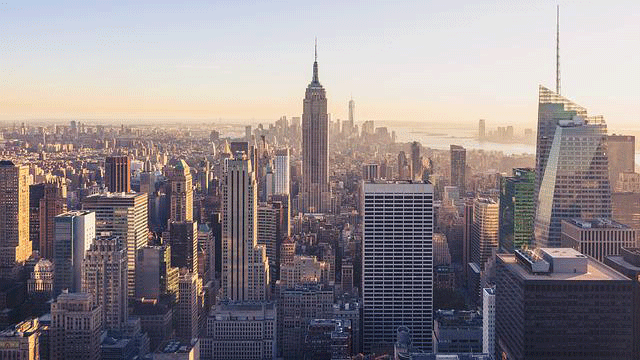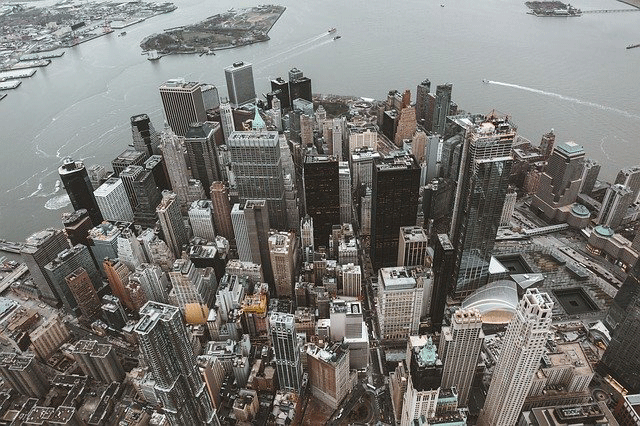Today, over 55% of the global population lives in urban areas. In 2050, the UN estimates that 68% of the population will live in cities. This sudden growth expands infrastructure to accommodate more people in cities. Increased urban activity means more heat from cars, people, and buildings. This warms up the city more than the surrounding area leading to an urban heat island effect.

UN estimates that 68% of the global population will live in cities by 2050.
Why Are Cities Getting Hotter Than the Surrounding Areas is Important to Know?
Over the last 100 years, the average global temperature has increased by around 1.4oF (0.8oC). As the planet gets warmer, heatwaves are becoming common. Moreover, extreme heat can also intensify sea level rise, storms, floods, and droughts. Warmer temperatures can disrupt public health and threaten biodiversity.
Global cities will experience frequent and extreme heatwaves in the future. By 2050, about thrice the number of cities will experience warmer temperatures. This is equal to 970 cities with extreme summer temperatures of over 95oF (35oC).
In New York, the summer temperatures are 7oF (4oC) higher than in the neighboring areas. This can cause heat exhaustion and dehydration for the city’s residents. Hot weather estimates about 350 deaths on average every year. The hotter the climate, the operating fans, and the air conditioners need more energy. This fuels energy consumption in cities.
Hotter areas of the planet will have to sustain a more extended period of warmer temperature. And colder regions will experience like never before.
What is the Urban Heat Island Effect?
Urban Heat Island (UHI) occurs when cities are warmer than the surrounding rural areas. UHI is an environmental problem affecting several urban regions around the world. The urban heat island effect is intense during the summer months.
Cities and the countryside receive the sun’s heat and light in the same manner. But, the absorption of heat is different in each environment. Cities have higher temperatures due to increased human activity, buildings, and materials. These re-emit more solar heat than the natural environment.
What Causes the Urban Heat Island Effect?
Lack of Vegetation
Green spaces provide shade and cool air temperature through evapotranspiration. But, cities are becoming more dominated by paved areas than green spaces. So, cities receive less amount of evapotranspiration due to limited vegetation.
There are some barriers to greening cities. Such as rise in housing demand, high land costs, and economic constraints.
Buildings, Materials, and Impermeable Surfaces
The leading cause of the urban heat island effect is urbanization. Buildings are good at trapping large amounts of solar radiation. The amount of solar heat absorption in cities relies on several different factors. Like building spacings, orientation, dark surfaces, and materials for roofs, pavement, & building facades.
Cities have dark-colored materials like steel, and asphalt that absorbs the solar heat. Roads, parking lots, and other paved surfaces can absorb heat from the sun. These impermeable surfaces can cause water runoff during rainfall. And redirect the water to a storage facility instead of being absorbed by green spaces. Which usually helps to cool down the area through evapotranspiration.

Buildings, roads, and pavements are good at absorbing large amounts of solar radiation.
Waste Heat
Waste heat refers to the energy burnt off from people and tools. Energy from cars, factories, and people’s activities often escapes as heat. Thus, more energies in an urban space often contribute to the urban heat island effect.
Use of Air-Conditioners
As cities get hotter, buildings increase their air-conditioners to help cool the interiors. But, these devices can release heat into the air, further intensifying the UHI effect. Air conditioners produce high energy consumption and drive global warming.
Dense Urban Areas of Tall Buildings
Many urban areas have dense structures of high-rise buildings and skyscrapers. These tall structures reflect heat that gets trapped by other surrounding tall buildings. The warmer air surrounds the buildings with little or no space to leave, making the city warmer.

Tall buildings reflect sun’s heat that gets trapped by adjacent skyscrapers.
Climate Change Impacts
The continued global warming can worsen the cities already experiencing the UHI effect. With urban population growth and a decrease in natural spaces, UHI will intensify. This could be harmful to both human health and the environment.
Adaptation to Urban Heat Island Effect
Vegetation: Enlarging green spaces, and installing green roofs reduce the heat through evapotranspiration. Green spaces provide shade and cool the surface and air temperature.
Smart Urban Planning: Planning mixed-use neighborhoods can help reduce vehicle heat and emissions. Light-colored building materials, roofs, pavements, and facades can help lessen heat absorption.
Reducing the heat island effect can limit electricity demand for air conditioners. This further reduces greenhouse gas emissions and waste heat released into the air.
Mitigating UHI helps urban residents to prepare and adapt to climate change effects.